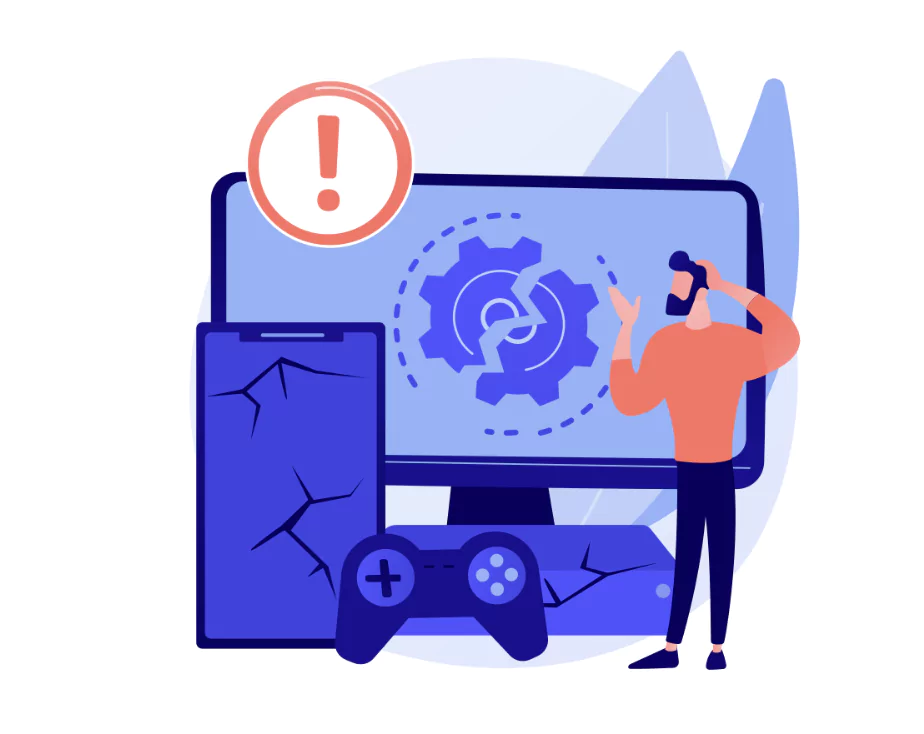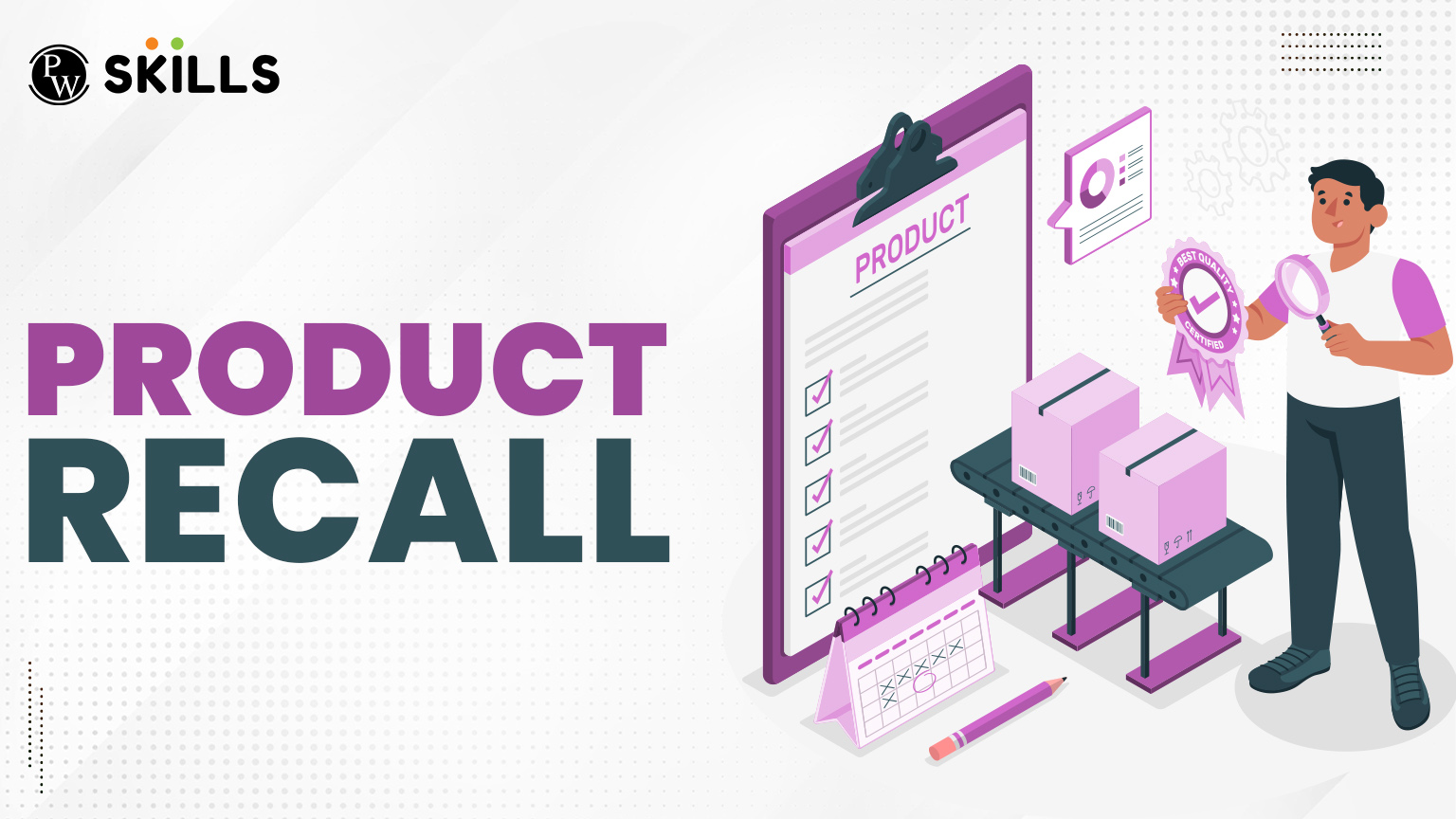Product recall is an option which an organisation chooses when they find some defect or safety issues in their product that has already been launched and used by the general public. To avoid further escalation of security issues, compilation regulations, or protecting data leaks, the product is removed from the market and called back to its point of origin where it will undergo fixtures and then re-released in the market.
As the word itself contains “recall” which means summoning something back to its original place. A product recall can be specifically requested by users which include return, replacement or exchange of the product when there are defects in the product which affects its optimal performance, and more. In this blog, we will learn more about Product Recall in detail.
What is Product Recall?
Product Recall is based on a situation where an organisation decides to remove a specific product from the market which is already launched and available to the public due to inconsistencies, poor performance, bugs or lags taking place within the product.

This step is taken to ensure customers safety including data and privacy. It also includes compliance with the regulations and prevents any further liability due to the product defect. It is better to choose product recall when there are following conditions.
- Safety risks
- Manufacturing defects
- Contamination
- Incorrect labelling
- Main features not working
- Data or information leakage
- Unauthorised access permission
There can be various kinds of faults, some can be healed instantly while others need special attention. To ensure quality assurance and manage safety concerns products are generally recalled for fixtures. This is also carried out as a precautionary method which reduces more major risks.
Read More: What is Product Market Fit? | Definition and Examples
Why Do Product Recalls Happen?
Product recalls take place may start initially after noticing customer complaints or rising concerns with the working of a product. First the organisation connects with the concerned person with complaints and tries to fix it on hand. But if the product recalls more attention then a full scale recall is decided for the product. There can be many reasons for initiation of recall, let us check some major reasons below.
- Safety Concerns: There might be cases when the product working or operation can cause major injury, defects or permanent illness to users. This is one of the most important escalations for product recall.
- Labeling Errors: When the packaging get wrong the product might be recalled as the customer who ordered it won’t be accepting an order with something that he did not even do.
- Quality Control: When a product does not meet the expected quality standards as per the manufacturer it is recalled due to poor product quality. It is generally initiated by the organisation who build the product to maintain people’s trust in the product.
Read More: What Does a Product Marketing Manager Do? 2025 Career Guide
3 Key Elements of Effective Product Recall Process

It is very important to plan product recall before initiating the process as a poorly handled product recall can become a problem for manufacturers as well as the customers involved with the product. Once you start with the product recall there are five major elements which must be taken care of.
1. Communication
Communication is way too important between the suppliers as well other core members of the organisation. You will have to let the seller and other team know that the product is discontinued and hence take the steps accordingly. All the authorities involved in the product development must get familiar with the new updates related to the product.
- You can let your customer know about the latest development via mail, letter or a personal phone call.
- The size of the recall needs to be estimated carefully where you might have to contact a very large number of customers depending on the scaling of your product and presence in the market.
- Customers who are already using your product must be thoroughly communicated about the development and all the precautionary measures they need to take.
2. Speed
You have to be very careful about the speed of the product recall as the agility methodology is much more preferred for the process. When your product has developed a certain defect you will be responsible if the customers or people related to the product get hurt or injured using the product. Hence, the image and reputations are at stake here. It is important to respond quickly to these issues.
- When you act quickly you can stop people from getting their hands on defective products which might damage your reputation in the long run.
- You also have to be quick in informing people who are already using the product about the safety procedures they must follow to avoid any loss or harm.
- Make sure you reach your customer before the media news takes cover. It might lead to loss of trust.
- A product recall can also be issued by the government agency which might issue product recall with a strict deadline which must be followed.
3. Capacity
The ability to contact a large number of people is also an important element in ensuring an effective capacity of the product. Organisation also need to ensure that they have the required amount of inventory space to hold the product. Sometimes recall might require transportation which will be an extra cost generating a need for logistics to ship the product in large quantities to the desired location.
Also, the organisation must log all the communication steps taken to get in touch with the customers along with all original documents of the entire issue in the product. Documentation is important to convince customers with all facts on paper and involve them in taking a serious action.
Read More: What are Product Demos and How to Use Them Effectively?
Major Risks of Product Recall
There are risks involved with the product recall which can either be product liability claims or government prosecution. You have to be very careful to contain the risk of the product recall. Make sure you document all the procedures or steps taken to address the product recall. When either suppliers or manufacturers are responsible for the recall you as a product owner must check for the possible reason and steps needed to fix the issue.

You have to keep yourself updated with all the product related future insurance claims or other claims. You can paste the notice on your organisation website received from government regulators. The product recall must leave a positive impression for the companies which means the public must see that the company is handling this situation judiciously.
How to Handle Product Recall Effectively?
To handle the pressure of product recall properly you as a product owner need to ensure certain measures beforehand. Check some of them below.
- Make sure you identify the problem quickly by applying different review links, feedbacks, product testing, internal audits. The earlier you find the flaw the better you have time to respond.
- Make sure you stop distribution and sales of the product immediately after the confirmation of the defect. Inform your retailers, partners and distributors.
- Make sure you inform the regulatory authorities about the defect to build transparency and avoid any penalty.
- Communicating with customers is the real part, make sure you are honest with them. You can communicate via mail, social media, your website, email, and more.
- Make sure you also focus on providing an easy return or repair options while looking out for the root cause and solutions simultaneously.
Also Read:
- Product Line : Meaning, Types, Advantages, Disadvantages and Working
- Product Analytics 101: Definition, Metrics & Tools
- Product Specs | Definition and Overview
- Problem Solving Products: How to Find the Best Ones to Sell
Learn Product Management With PW Skills
Build your career in Product Management with PW Skills Product Management Course under the guidance of dedicated mentors and interactive course tutorials. Get an advanced in depth learning completely based on smart agile methodologies and conduct strategic planning, market analysis, and more to maintain product market fit.
Build a job ready profile with PRD from the scratch and work on a capstone project to strengthen your portfolio. Prepare for your interview with guidance from dedicated mentors who will also help you in resume building with dedicated sessions. Get industry recognised certifications and discover a wide range of opportunities in Product management only at pwskills.com
What’s More In It?
- Get blended mode of tutorials with live sessions and pre-recorded videos
- Get real world capstone projects to develop hands on skills and build job portfolio
- Get in-depth coverage of all industrial specific topics and skills
- Prepare for interview with career support options available with this course.
- Get dedicated resume building sessions with mentors.
- Get industry recognised certifications and discover a wide range of opportunities in Product management only at pwskills.com
- Build a job ready profile with PRD from the scratch and work on a capstone project to strengthen your portfolio.
Product Recall FAQs
Q1. What is Product Recall?
Ans: Product Recall is a situation where an organisation decides to remove a specific product from the market which is already launched and available to the public due to inconsistencies, poor performance, bugs or lags taking place within the product.
Q2. What is recall in quality?
Ans: When a product is removed or corrected due to reasons in the product including quality, safety, ethics or guidelines failing to meet can result in a negative impression for companies.
Q3. What are the key elements of effective product recall?
Ans: Speed, capacity and product communication are the key elements of product recall.
Q4. What is the type 2 recall process?
Ans: The type 2 or class II recall is a phase where usage of a product can lead to reversible adverse health consequences.

